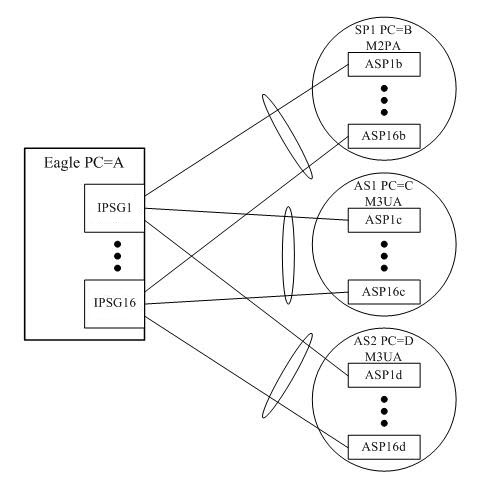The IPSG feature provides M3UA functionality that behaves more like other LIMs, providing the following benefits:
- The new IPSG application M3UA operational model equates Linkset (LS) and Application Server (AS). It equates Signaling Link (SLK) with an AS-ASP (Routing Context + Association) instance. This allows each AS-ASP instance to be administered as a signaling link.
- A new signaling link type, IPSG-M3UA, can be assigned to linksets having up to 16 signaling links. This is double the 8-link (and card) limitation of the current IPGWx linkset.
- Each IPSG card will host up to 128 signaling links.
- Each IPSG card will host up to 128 SCTP associations. A maximum of 16 IPSG-M3UA signaling links can be assigned to a single association.
- The adjacent point code (APC) of the IPSG-M3UA linkset is the point code assigned to the Application Server serviced by the linkset. The IPSG-M3UA linkset does not require a fake adjacent point code as the current IPGWx application does.
- Each IPSG-M3UA signaling link can have a single IP connection, unlike the current IPGWx signaling link which can have up to 50 IP connections.
- The state of the IPSG-M3UA signaling link will be based on the states of the assigned IP connection and AS-ASP instance. If the IP connection is unavailable for traffic, then the IPSG-M3UA signaling link will also be unavailable. If the AS-ASP instance is not available, then the IPSG-M3UA signaling link will also be unavailable. *
- Multiple IPSG-M3UA signaling links (up to 16) can share one IP connection, as long as all of the IPSG-M3UA signaling links and corresponding IP connection are hosted by the same card. This enables multiple SS7 variant support across a single IP connection.
- The IPSG-M3UA signaling links provide MTP3 routing only. The IPSG application does not implement secondary routing-key routing, so every attached AS must be uniquely identified in the network by a point code.




